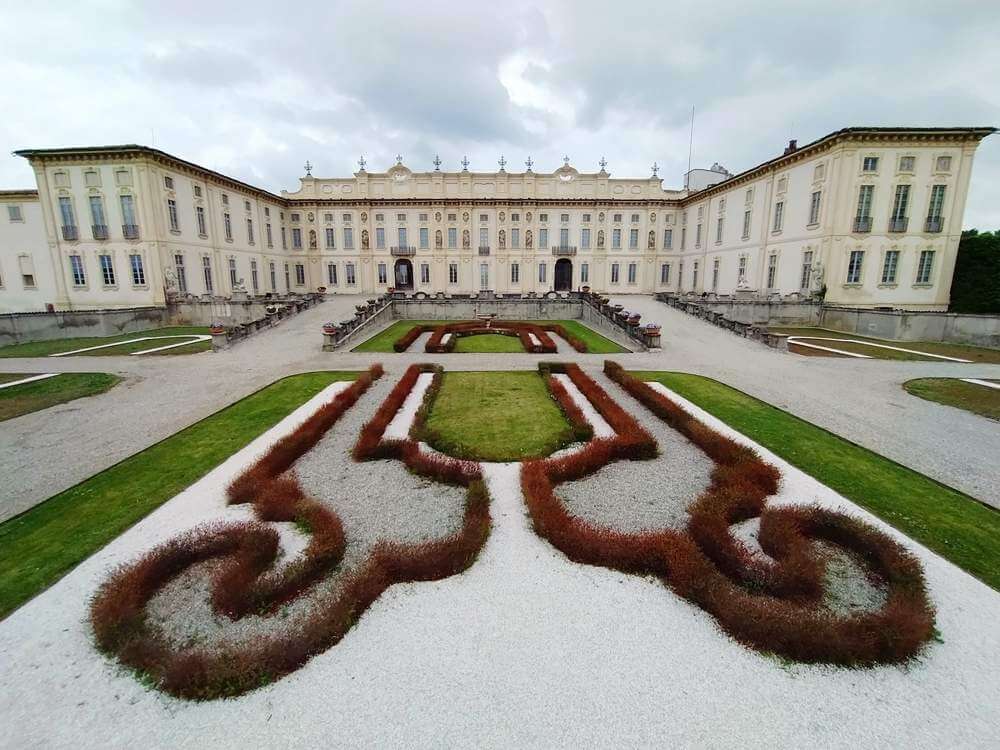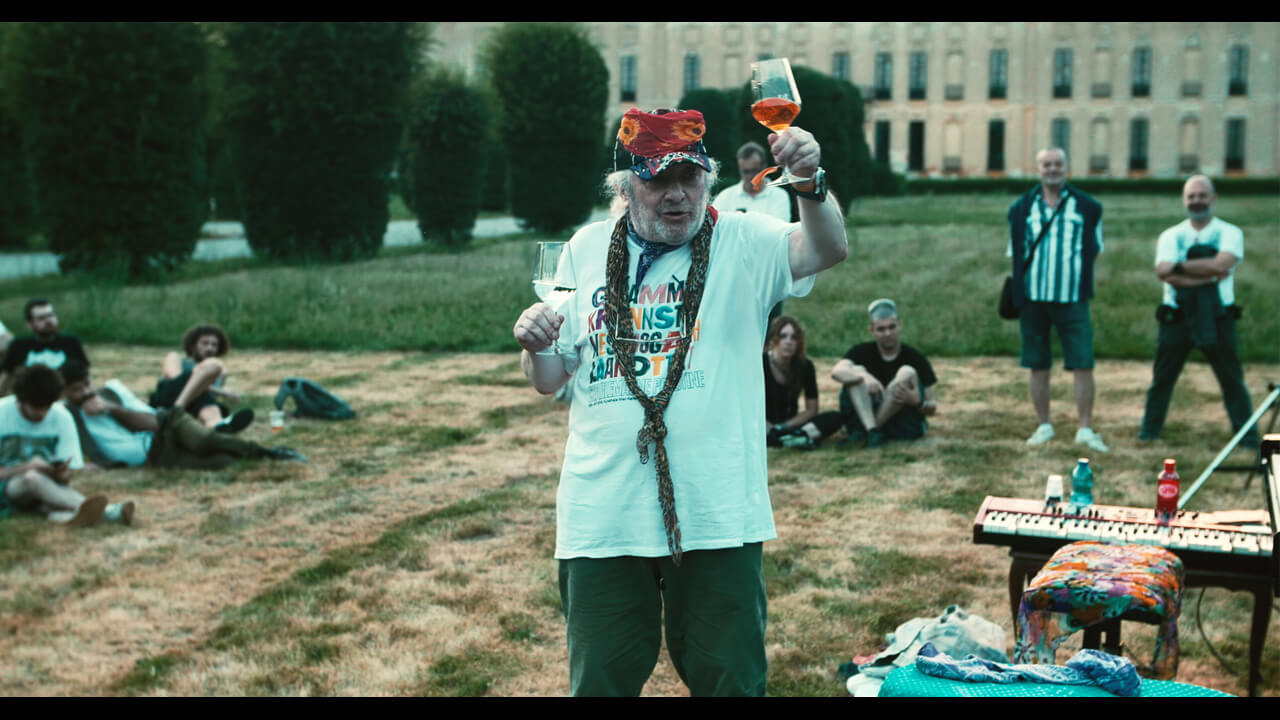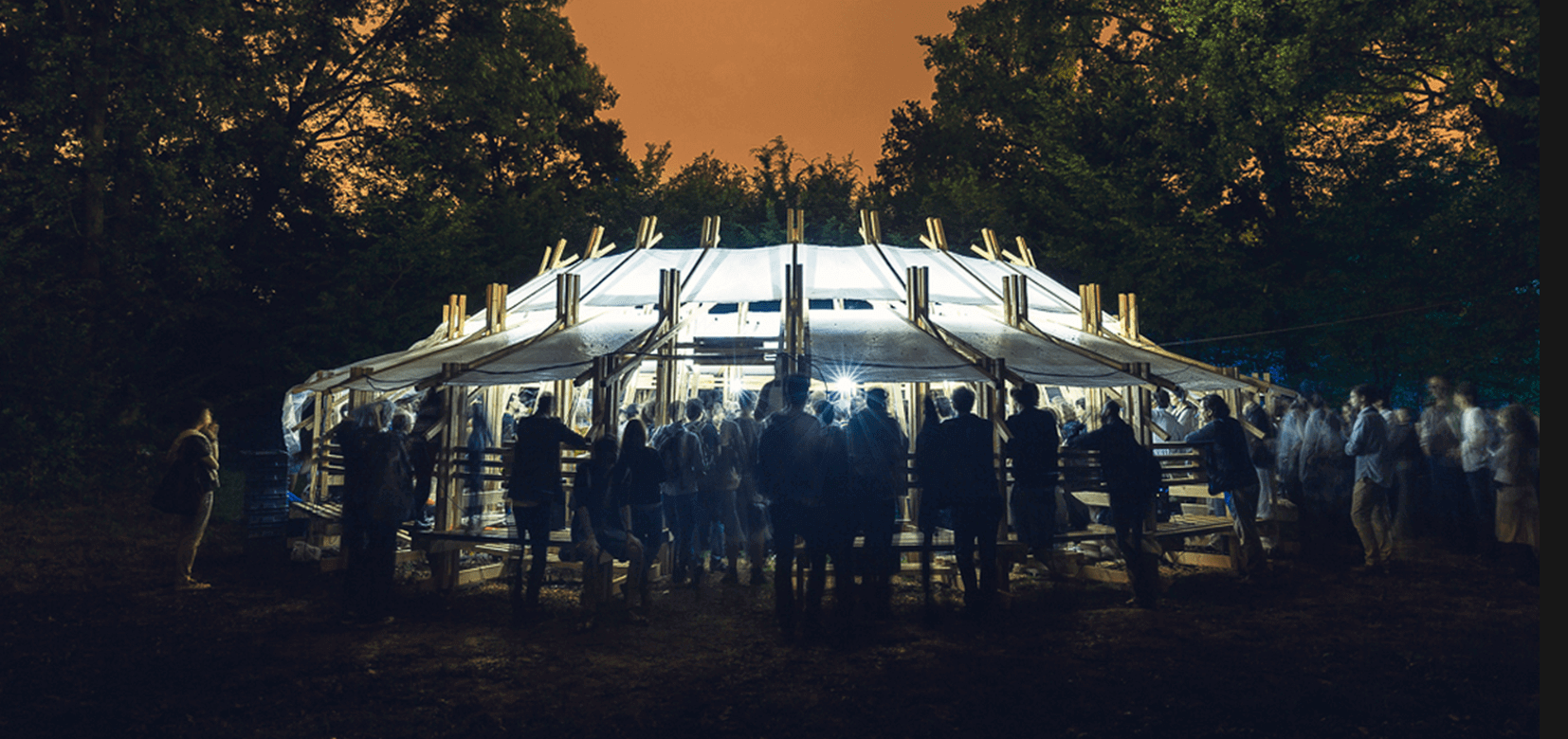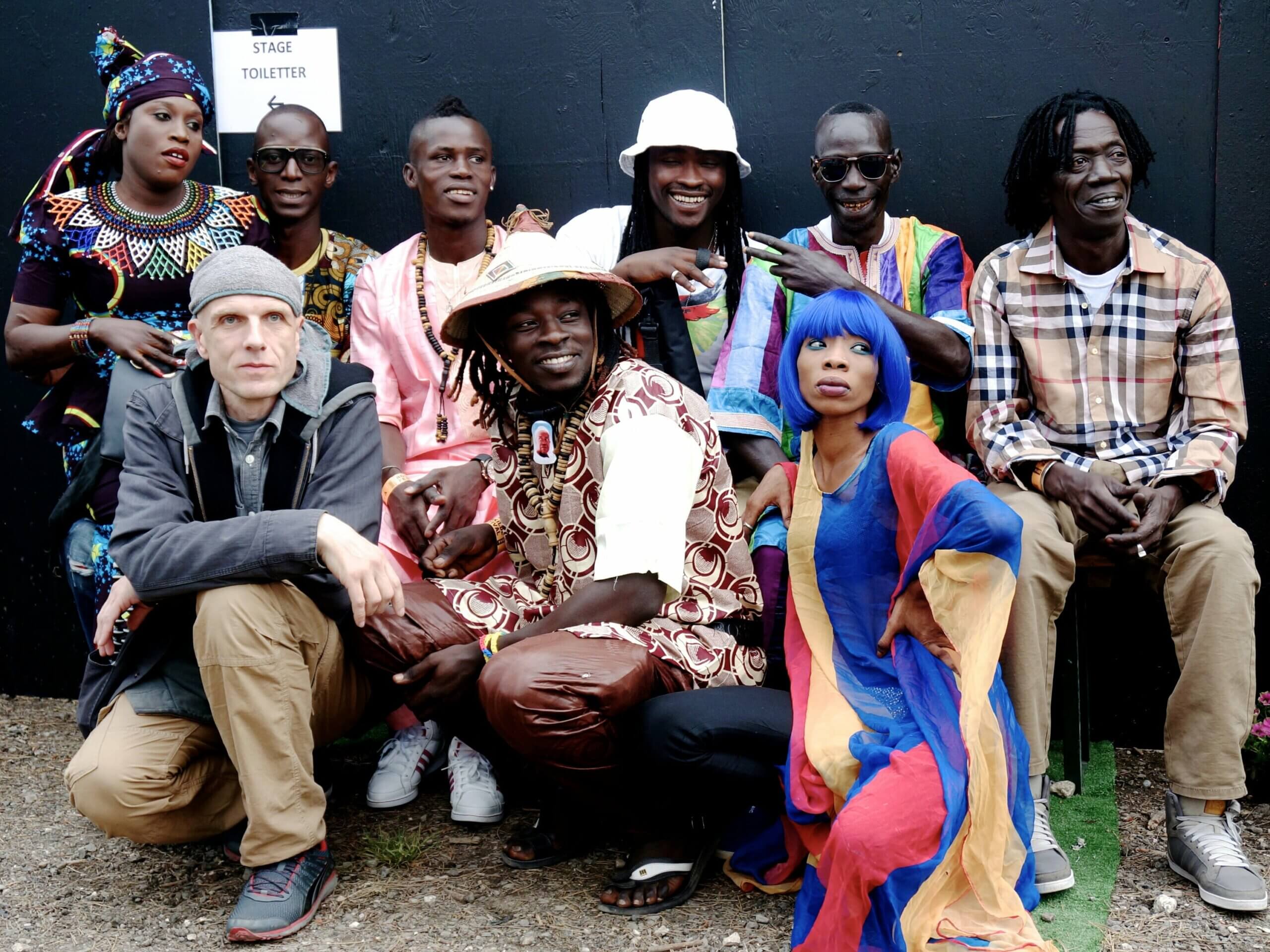Ruggero Pietromarchi talks about Terraforma, the festival designed to last in time and memory
Ruggero Pietromarchi
Terraforma, the festival that combines artistic and social experience, returns to Villa Arcorati from July 1st to the 3rd. We had a chat with one of the founders, Ruggero Pietromarchi, to explore the reality of the festival and its link to musicians, artists and sustainability. Despite the ever-increasing membership numbers, the essence of the festival remains unchanged, music is at the heart of the festival and the line up explores the best of current experimental music.
How did Terraforma come about and how has it changed over the years?
The festival came to life in 2014 at Villa Arconati and from the beginning our focus was on the format in which the event was to take place, i.e. three days of music and the possibility of sleeping in the concert venue by camping, so as to provide a very intense and experiential dimension for the audience. We are not festival freaks, we have not attended all the festivals in the world, but we are interested in deepening and developing a project that is not only cultural but also a social experiment. The festival not only provides an artistic experience for the visitor but also offers a social experience, where the language of Terraforma, the music, remains the catalyst for everything. The fil rouge of our modus operandi has always remained sustainability.
One of the requirements that prompted us to organise Terraforma was to develop an event that could create a short circuit, where people could free themselves from their routines, get away from the everyday and make room for new interactions: interactions between new people who do not know each other and interactions with the surrounding environment, through our language (music). We did not want to create a festival that was an end in itself, that was only limited to the three days of shows and performances, but we wanted to create something that would last in time and in the memory of the participants, something that would last even when the visitors arrived home and returned to their everyday routine.

Crucial to the success of this objective is the vital connection that Terraforma has with Villa Arconati.
Our project related to sustainability came about in a very practical and concrete way: we rehabilitated the historical park and the Italian garden of the villa, we have reinterpreted a historical monument such as Villa Arconati, built in the 18th century and always used as the private home of a wealthy owner, a villa of delight where family and friends were hosted. The evolution of society obviously meant that the Villa could no longer serve its original function as a private home, and it was not intended to be used as a private club or resort. Villa Arconati is a place that needs to be reinterpreted while retaining its identity: this is the goal we have set ourselves together with the Fondazione augusto Arancilio, which takes care of the historical site.
The core of the Festival has remained the same since the first year, it has certainly grown if we talk about numbers, and the regeneration and sustainability projects have increased: we have recovered other parts of the green areas and also developed in other areas, for example we have planted a labyrinth and the entire camping area and started a whole series of new projects to reduce impact. The project has grown and expanded into the Villa Arconati area, but the essence has remained the same. One of the peculiarities of Terraforma is to have between 20 and 30 artists alternating on different stages, which we were able to achieve by requalifying different areas of the park, allowing us to occupy more space without ever having concerts at the same time, and this has remained the case from the beginning, from the first year to today.
This allows us to avoid FOMO situations, where people feel they are missing out on something but can instead immerse themselves in this place by being together in an incredible place with music… unique.
What is the research process by which you choose your musical artists?
The search for artists is a process that never stops completely, it is a constant search between records, concerts, festivals, performances, exhibitions. The festival starts at sunset on Friday and ends at sunset on Sunday with a brief interruption at night, the artists take turns on the different stages, without ever having simultaneity, the programme tries to pair musical artists according to the times of day and night. We try to have a very broad and open musical spectrum, we don’t want to focus on just one musical genre, but the idea is to find those artists who define themselves as experimental, whether it be jazz, concrete music, techno, or dab.
The idea is to invite those artists who express a sense of contemporaneity and experimentation, whether it be the classic tombak (Iranian percussion) master like Mohammad Reza Mortazavi in 2019 or the historic Charlemagne Palestine who played in 2017 or the Brazilian queer group Teto Preto who will play on Sunday. The aim is to create a diverse programme that reflects the current musical landscape and gives artists the opportunity to express their artistic experimentation to the full, following a precise thread that unravels over the three days of the festival.

How do you choose the artists or craftsmen to be involved in the construction of the installations? How do they create a dialogue with the musical artists?
Starting with the core idea of the festival being sustainability, we decided to come up with a sustainable way of setting up the space and the stages. There are not many art installations, but rather creative ways to make sense of our intervention at Villa Arconati. For example: if we have to light the long path from the entrance to the stage, we are not satisfied with bulbs on the ground but involve light designers who create an ad hoc light path with us. Or, for the construction of the stages, we don’t rent the usual standard trusses but create, together with architects and craftsmen, structures that can be easily assembled and reused in subsequent editions of the festival. This operation is sustainable all round and also activates social interaction by involving and creating a network of people who want to express themselves in an original and creative way. In this way the park set up becomes on the one hand a distinctive sign of the festival, an integral part of our communication, it allows us to have an extremely site-specific and customised set up for Terraforma, and on the other hand it allows us to have a lower impact on storage and enables the re-use of materials. Doing all this is very complicated, sometimes requires twice as much work and time as it should be spent, but for us it is meaningful and has to be done that way.

How can the combination of music and art help audiences to talk about sustainability and increase their awareness?
The concept of sustainability can be interpreted in many different ways, from my point of view everything should be sustainable, in this case we are asking people to start practising sustainable thinking. The audience does not come to the festival to talk about sustainability, but they experience it across the board, from the redevelopment of the villa to sustainable stages and so on.
In bringing people to sustainable thinking, art and music have a priority task because only through them you can really touch very deep chords that can raise awareness and turn a thought. The focus has to remain on music because that is the way we can go deep, and then everything else talks about sustainability in an indirect way. For example, appreciating the effort that has gone into making the stage so intricate where the audience can get about 60 cm from the artist, with no barriers and no distance this should generate sensitivity and trigger deep reflections on the space one is experiencing. And these reflections are triggered by the combination of art and music.
I know it’s hard to choose, but what are the three performances we shouldn’t miss this year?
Definitely that of Autechre on Friday night, an iconic duo from the English school of the 90s, pioneers of electronic music, who will play in total darkness for the occasion. An incredible sonic performance that, in my opinion, perfectly interprets the kind of experience to be had at Terraforma, where you lose all visual reference and the environment is experienced only through music. On Sunday, on the other hand, we have a Senegalese group Mark Ernestus’ Ndagga Rhythm Force on the line-up, who are definitely one of, if not the most contemporary and experimental African music collective around. Then, to talk about what’s happening on Saturday, I suggest the preview of Common People, a new project that will see its world premiere at Terraforma and features a collaboration between Lorenzo Senni, Francesco Fantini and Icelandic singer Jofridur Akadottir.

My Art Guides also has a playlist on Spotify shared with our readers, would you recommend three songs to add to our playlist?
Yes definitely! How many can I recommend? Three? No, let’s make it seven!
- You, at the End – Lafawndah
- Sasuke – DJ Nigga Fox
- AS Acà – Amnesia Scanner, Daniela Lalita
- Esc esc – Autechre
- Velo Di Maya – Voices from the Lake
- Right is alright, Wrong is to belong – Moin
- Simb – Mark Ernestus’Ndagga Rythm Force
Listen our playlist!




